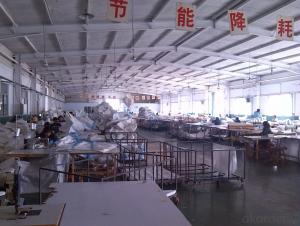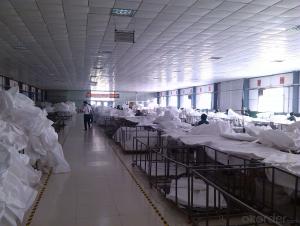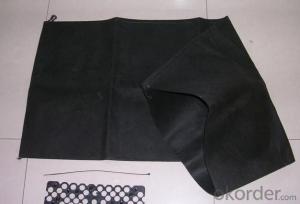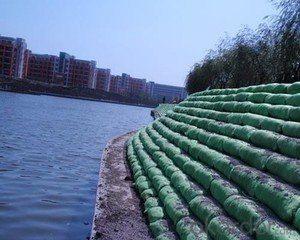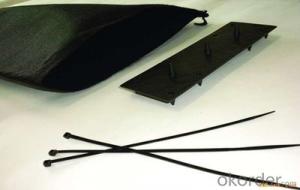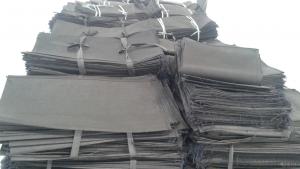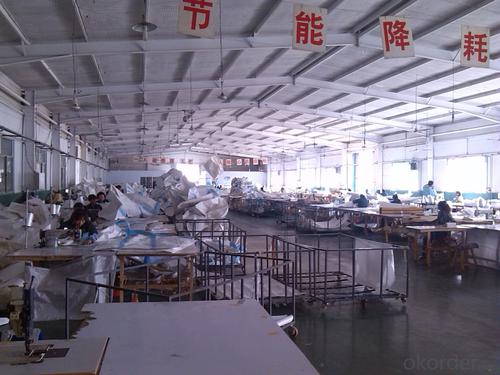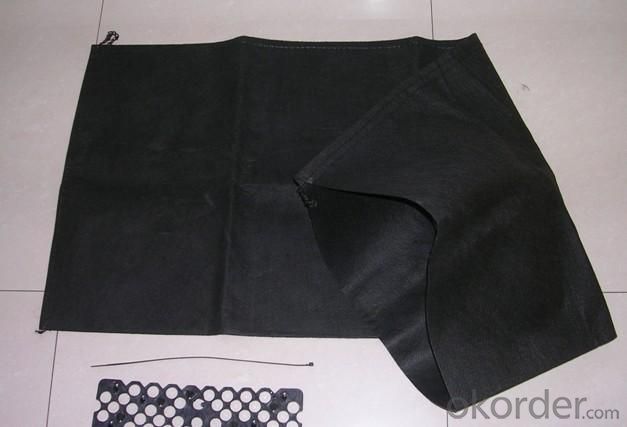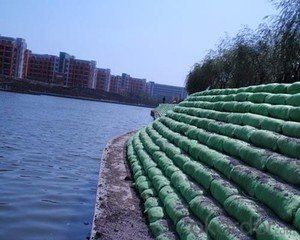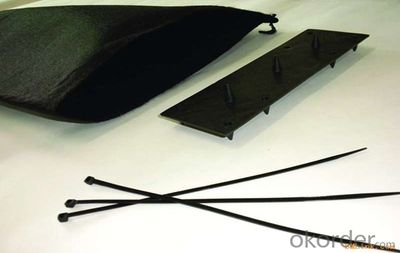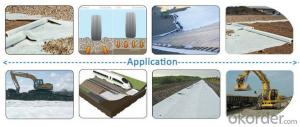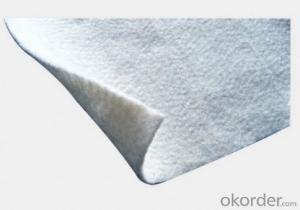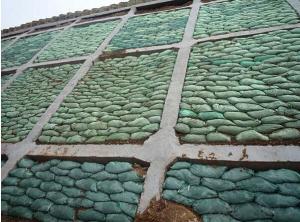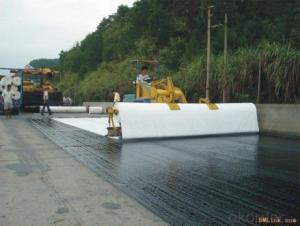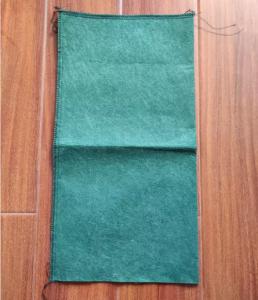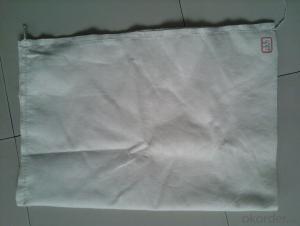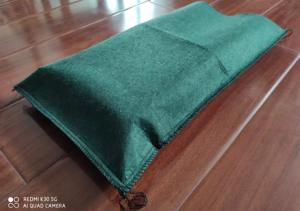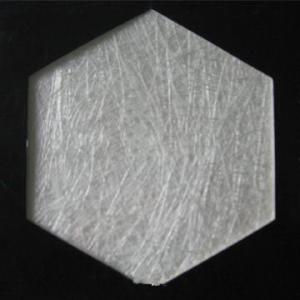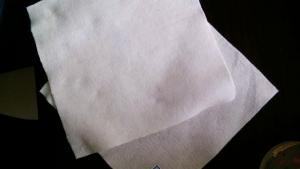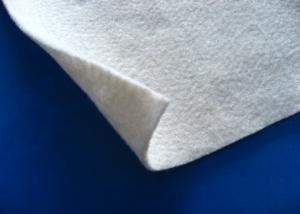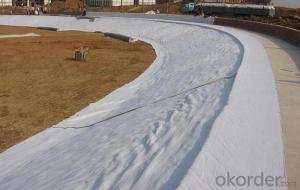Nonwoven Geo Bags Used in Embankment Protection
- Loading Port:
- Qingdao
- Payment Terms:
- TT OR LC
- Min Order Qty:
- 30000 pc
- Supply Capability:
- 500000 pc/month
OKorder Service Pledge
OKorder Financial Service
You Might Also Like
Description Of Nonwoven Geo Bags
Made by polyester(PET) or polyproplence(PP)fiber as the raw material,making double sides ironed and pressed needle-punched non-woven geotextile through the spun bonded technology,and then processed to bag with specified dimension, and tnen spray seeds which are suitable for local climate, form a new product which could restore or create a new ecosystem.
Main Features of Nonwoven Geo Bags
1. With uv resistance,
2. Strong corrosion resistance,
3. Resistance to microbes,
4. Anti-aging and easy to plant growth,
5. Not adapt to the environment of strong, material degradation, good stability,
6. Non-toxic, not combustion, crack extension.
Specifications of Nonwoven Geo Bags
1,) Plane size range: (can be made according to the requirements of the design and engineering)
2,) Cloth gram weight range: 100g/m2~500g/m2
3,) Tensile strength : ≥4.5kn/m
4,) Elongation at break: ≥40‰
Specification | 110GSM | 130GSM | 150GSM | 300GSM | 450GSM |
Breaking strength KN/M≥ | 6 | 10 | 12 | 19 | 25 |
Elongation at break ≥ | 60% | 60% | 60% | 60% | 60% |
CBR Mullen Burst Strength KN ≥ | 1.2 | 1.4 | 1.5 | 3.1 | 3.8 |
Nonwoven Geo Bags Images
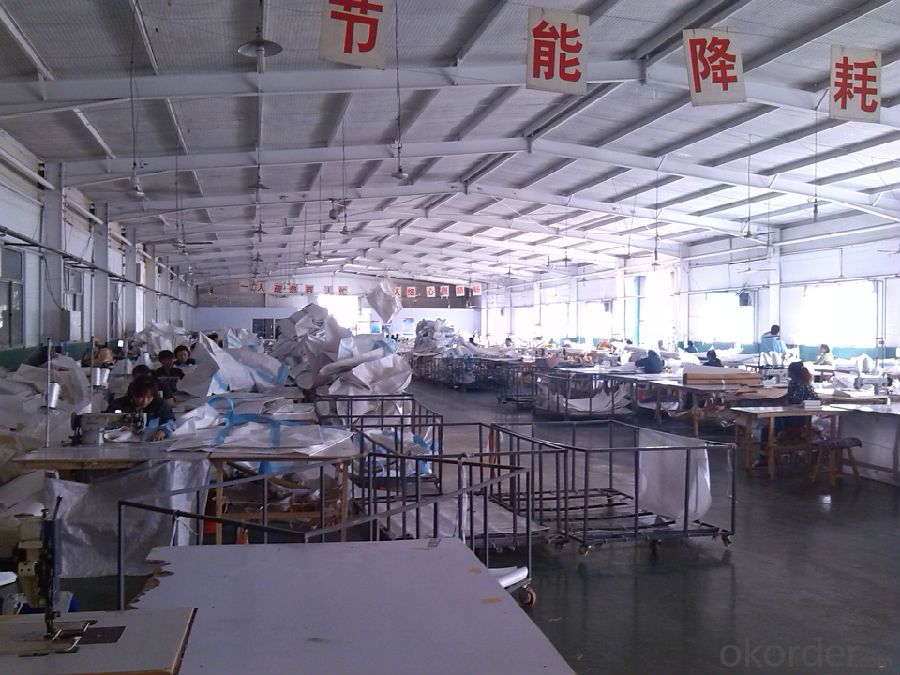
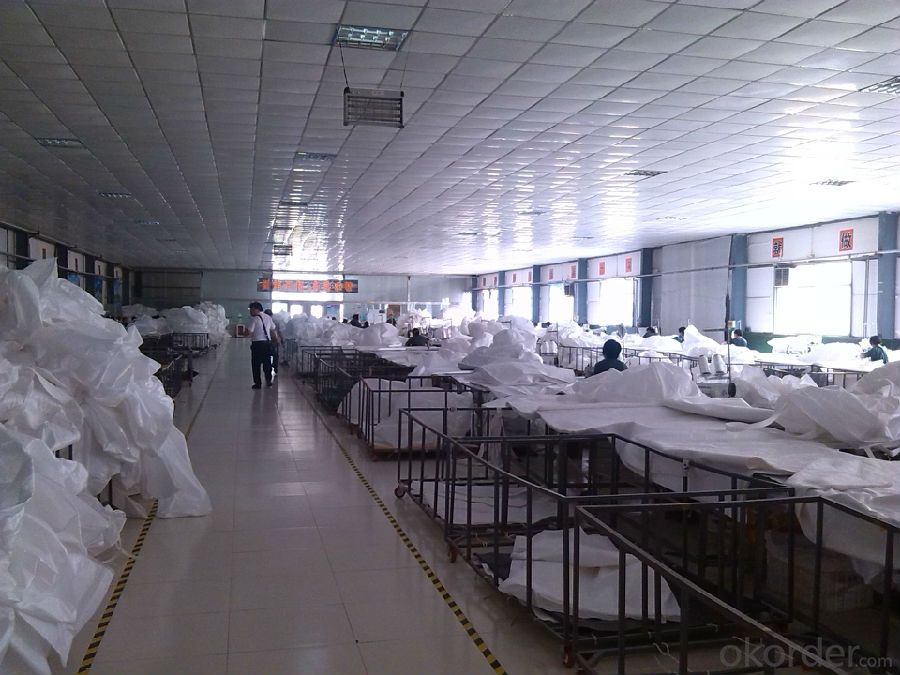
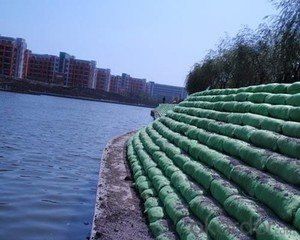
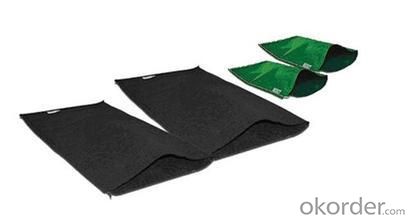
FAQ
1. Do you supply free samples for customers?
Yes,we will supply free samples for you.Please send your address for us.
2. How Many years experience do you have?
We have been exported to more than 20 countries in the past 15 years.
3. How long do we usually reply your request?
We always reply our customer within 24 hours.
- Q: What are the different methods of geotextile installation?
- There are several different methods of geotextile installation, including trenching, direct placement, sewing, stapling, and adhesive bonding. Trenching involves excavating a trench and placing the geotextile fabric in it before backfilling. Direct placement involves simply unrolling and placing the geotextile on the desired surface. Sewing involves stitching the geotextile to another fabric or material, providing additional strength. Stapling involves using staples or nails to secure the geotextile to the ground or other surfaces. Adhesive bonding involves using specialized adhesives to attach the geotextile to the desired substrate. The choice of installation method depends on the specific project requirements and the type of geotextile being used.
- Q: In the river within the construction of flexible piping can use geotextile to do anti-floating measures
- Yes, I am specialized in producing the installation
- Q: How can the geotextile extension of 65 to do the following
- I professional production geotextile geomembrane and other geotechnical materials, wish smooth
- Q: How do geotextiles help in preventing erosion around culverts?
- Geotextiles help in preventing erosion around culverts by acting as a barrier between the soil and water flow. They provide stability and reinforcement to the soil, preventing it from being washed away. Additionally, geotextiles help filter out sediment and prevent clogging of the culvert, ensuring proper water flow and reducing the risk of erosion.
- Q: Long-term exposure to geotextiles on the human body what harm?
- No harm, Huazhi geotextile material answer
- Q: How do geotextiles help with reinforcement of geogrid reinforced embankments?
- Geotextiles help with reinforcement of geogrid reinforced embankments by acting as a separation layer between the soil and the geogrid. They prevent the intermixing of different soil layers, thereby maintaining the stability and integrity of the embankment. Additionally, geotextiles enhance the drainage capabilities of the embankment by allowing water to pass through while retaining the soil particles. This helps in reducing the potential for erosion and maintaining the long-term performance of the embankment.
- Q: are they used for same purpose with just different terminology?
- Geotextiles And Geomembranes
- Q: What are the factors to consider when selecting geotextiles for embankment stabilization?
- When selecting geotextiles for embankment stabilization, several factors need to be considered. These include the type and strength of the geotextile, its permeability and filtration properties, the soil conditions, the slope angle of the embankment, and the expected loads and stresses on the structure. Additionally, factors such as installation and maintenance requirements, cost-effectiveness, and the environmental impact of the geotextile should also be taken into account. Overall, a comprehensive assessment of these factors is essential to ensure the optimal selection of geotextiles for embankment stabilization.
- Q: Precautions for Polyester Filament Geotextiles
- Geotextile storage to meet the following requirements: the Treasury clean no debris, no chemical corrosion; not sun, tarnished; not weight, not scratch, to prevent violent collision; away from the hot source; dry and cool warehouse; There is a need for fire tools, fire hydrants, fire extinguishers and so on. Geotextile transport, loading and unloading requirements: can not be mixed with sharp items; hoisting with flexible rope; can not use steel wire rope directly hoisting; not with sticks, iron bars and other hardware auxiliary top loading; Stress dispersion measures, to avoid tightly tightened with a rope.
- Q: 400 grams per square meter of non-woven geotextiles how much money
- According to your technical parameters, the specific number of professional geotextile manufacturers to answer, power to discuss!
Send your message to us
Nonwoven Geo Bags Used in Embankment Protection
- Loading Port:
- Qingdao
- Payment Terms:
- TT OR LC
- Min Order Qty:
- 30000 pc
- Supply Capability:
- 500000 pc/month
OKorder Service Pledge
OKorder Financial Service
Similar products
Hot products
Hot Searches
Related keywords
